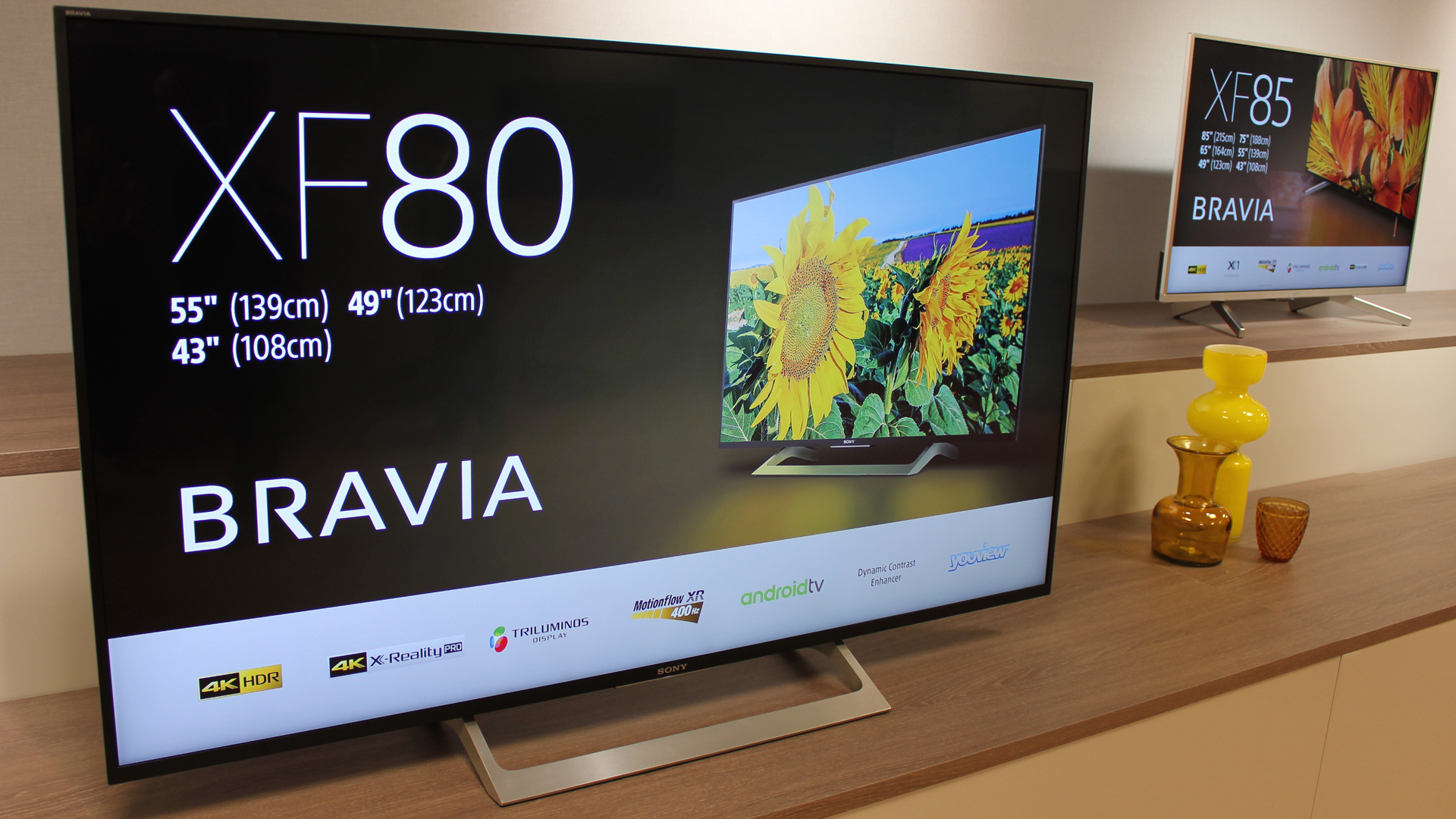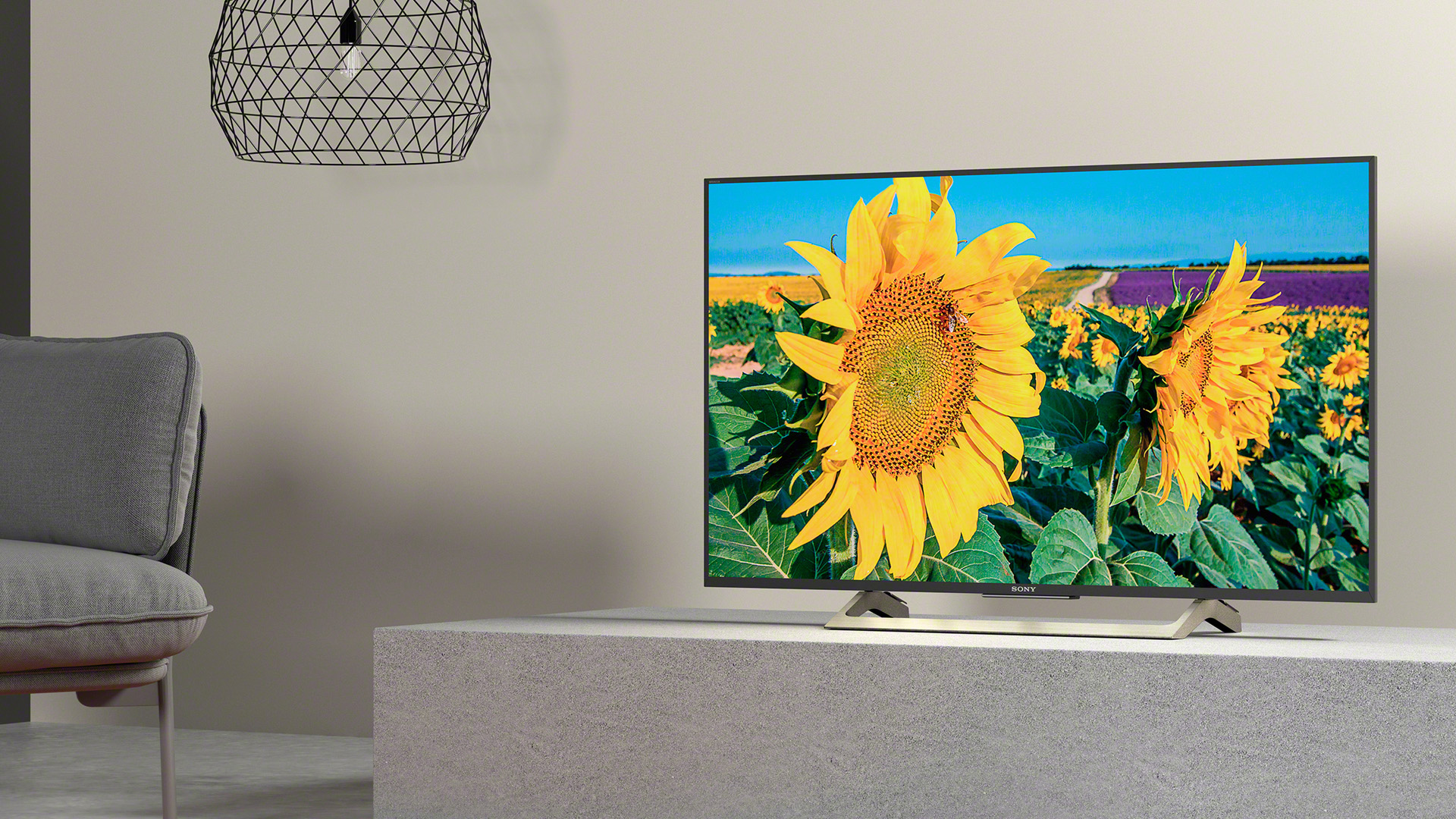Early Verdict
The stylish, 55-inch Sony XF80 could prove a steal for UHD movie fans but, if you’re into sports, you might want to think twice.
Pros
- +
Smart, narrow frame design
- +
Triluminos color vibrancy
- +
Amazon Alexa and Google Assistant
Cons
- -
50Hz panel limits motion handling
- -
Better contrast found up the Sony range
Why you can trust TechRadar
The incoming XF80 Series (anticipated to be the X800F in the US) provides a new entry point for 4K HDR from Sony.
Available in 55-inch (KD-55XF8096), 49-inch (KD-49XF8096) and 43-inch (KD-43XF8096) screen sizes, these flat screens cover most of the sweet spots sought by new 4K buyers.
We had an early preview at Sony UK’s annual product showcase and can confirm that lots of key boxes appear to be ticked too.

Design and performance
The 55-inch Sony Bravia XF80 in particular could prove a serious temptation for 4K buyers looking for a value deal. The specification is tempting and it’s a good looker too, thanks to a narrow aluminum frame and central skeletal pedestal.
Connectivity is standard. All four HDMIs are HDCP 2.2 compliant, for use with 4K sources, and there’s a trio of USB ports, one of which is a fast, 3.0 model for recording onto an external USB hard drive.

As expected, smart connectivity comes via the Android TV OS, and there’s a YouView overlay for UK catch-up TV services, via a roll-back electronic program guide (EPG).
Android TV remains a mixed bag of an operating system, but there is at least the opportunity to integrate with smart speakers. Google Chromecast is also built-in, which simplifies streaming from a mobile device.
The XF80 can be used with Amazon Alexa (in the UK only) and Google Home (UK, France and Germany). It’s also interoperable with the Sony LF-S50G smart speaker. With Amazon Echo, users can control power, select channels and control volume. Google Assistant adds voice search.
Integrated Bluetooth also means you can pair Bluetooth headphones with the set for personal listening.
The XF80 relies on Sony’s 4K X-Reality PRO image enhancement to boost detail. We’ve been consistently impressed by this. A wide color Triluminos display promises a high level of vibrancy.

The key differences between the XF80 and its step-up brother, the Sony XF85, relate to the screen itself. This is a 50Hz panel, with limited motion handling –
Motionflow XR at 400Hz in Sony spec speak.
This won’t be an issue for movie and TV fans, although if you’re into fast-moving sports, a 100Hz panel would be the preferable option. This probably isn’t the model to go for if you’re buying in anticipation of the FIFA World Cup this summer.
Certainly in terms of clarity and color, the TV should deliver, but this is largely supposition as we had no opportunity to evaluate real-world footage at Sony’s preview event. The Sony XF80 uses LED edge lighting coupled to a Dynamic Contrast Enhancer, a lower-cost alternative to local dimming control.
It supports HDR10 as standard, along with HLG (Hybrid Log-Gamma). We’ll have to wait until we get a screen on our test bench to find out just how well it actually handles HDR.

Early verdict
With a clean, modern design and Sony’s much-vaunted 4K X-Reality PRO image enhancement technology, the XF80 is certainly easy on the eye.
As yet, there’s no indication of price, but we would hope this model will be highly competitive. Screens are expected to debut early spring, so there’s not long to wait before we discover whether this is the 4K deal of the year.
- Check out our hands on Sony Bravia X900F Series review
Steve has been writing about AV and home cinema since the dawn of time, or more accurately, since the glory days of VHS and Betamax. He has strong opinions on the latest TV technology, Hi-Fi and Blu-ray/media players, and likes nothing better than to crank up his ludicrously powerful home theatre system to binge-watch TV shows.
What is a hands on review?
Hands on reviews' are a journalist's first impressions of a piece of kit based on spending some time with it. It may be just a few moments, or a few hours. The important thing is we have been able to play with it ourselves and can give you some sense of what it's like to use, even if it's only an embryonic view. For more information, see TechRadar's Reviews Guarantee.

